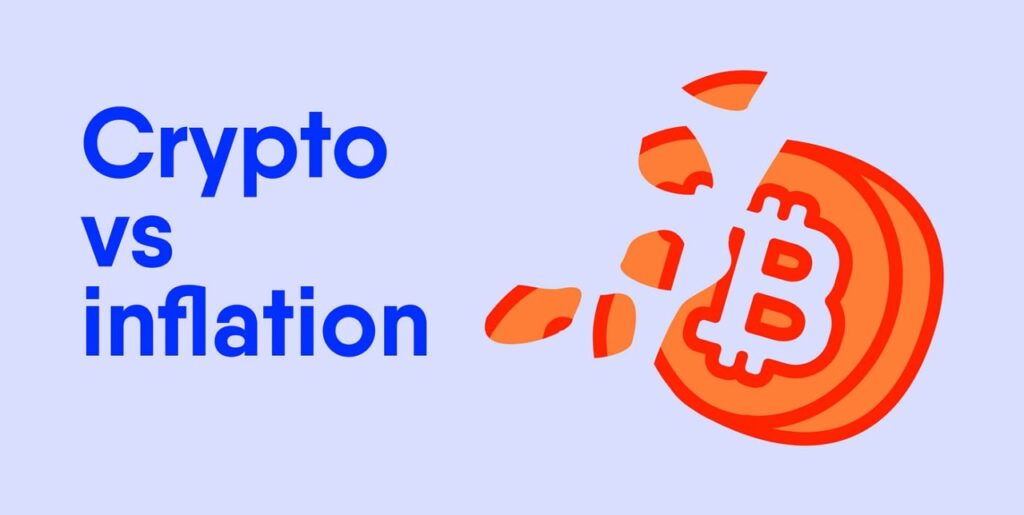
Fifteen years have passed since the introduction of Bitcoin – the first cryptocurrency, which was envisioned as an alternative to fiat currencies. It aimed to create a robust peer-to-peer financial system that could bypass government organizations and agencies, thereby eliminating the need for banks to manage the flow of money and the printing of fresh currency, which in turn causes inflation.
Overtime, everyone has unanimously believed that Cryptos cannot be currencies. But why? being deflationary seems like a solution to a lot of problems. So why Cryptos can’t replace the fiat currencies? Barely anyone discusses these at length. There are a couple of fundamental attributes about currencies in the modern economic set-up which are not part of any mainstream discussions about cryptos.
I try to explore those parts at a bit of length in this article. Read it till the end. Please add your comments and enhance this discussion further.
Misconception of Inflation vs Value of Currency
First and foremost, saying that “printing more money causes inflation and hence the value of money decreases” is an oversimplification. This notion is akin to blaming a measuring tape for getting shorter over the years while the child is growing taller. The basis of this argument is that more money being printed adds to the supply, thereby reducing its value. However, this does not take into account the complexities of economic systems.
Features of Traditional Currencies
Traditional currencies possess four main features that define them as currency within a modern economic system:
1. Medium of Exchange
2. Store of Value
3. Measure of Accounts
4. Legal Tender
While cryptocurrencies boast the first two features—being a medium of exchange and a store of value—they fall short when it comes to the other two.
Fiat currencies fulfil all the above requirements and are highly fungible, solving this problem by providing an intermediate store of value that is widely accepted until it is used for a transaction. For instance, when you work and get paid in cash, you hold onto that cash until you use it to buy something, making it a temporary store of value. You can exchange it for anything that you like. It can precisely measure how much value you are exchanging. And it is acceptable because it is a legal tender.
Importance of being a “Measure of Accounts” and a “Legal Tender”
Simply being a medium of exchange and a store of value is not sufficient to classify something as a currency. If these were the only requirements, virtually anything could be considered a currency. For example, the food in your fridge can be exchanged, and a simple lawn manure can store value if someone is willing to buy it. This, essentially, is what the barter system was all about. The critical questions here are: How much value does it store? And is it acceptable everywhere?
These questions are addressed by the other two features of a currency: Measure of Accounts and Legal Tender. A standardized and widely accepted currency needs to provide a consistent measurement of value over time and be recognized by everyone within a defined region, be it a market, state, or nation.
The Role of being a Measure of Value
It doesn’t matter how long you hold the currency; it will give you the same value today, tomorrow, a week later or a year later. That is the fundamental requirement of being a “Measure of Account”. This is similar to the metric system – an Inch is an Inch. Now or later. It does not change.
The “Measure of Value” is crucial as it allows for the standardization of prices and values across different goods and services within an economy. This feature ensures that every item has a clear and consistent numerical value, facilitating straightforward comparisons and transactions. Without a stable measure of value, it would be challenging to price goods and services, leading to confusion and inefficiency in the marketplace. A standardized measure of value, provided by fiat currencies, supports economic administration by enabling accurate accounting, financial planning, and long-term contracts. This clarity and consistency are essential for maintaining order and stability in the economic system, fostering trust and reliability among market participants.
Let’s just take a quick example of how the system would look like in absence of this feature of currency:
If we remove the modern currencies from the equation, your employer would have directly supplied you with the household goods in exchange for your work. You may like what you received, or you may not. Then you might need to find another person who may like what you have and who may have what you like to make a suitable exchange of goods. Then comes the question of how much of my goods in exchange of how much of the other one’s goods. Basically, the price of one thing denominated by another thing. Frustratingly complicated, isn’t it?
This is what fiat currencies solve – provide a medium of exchange and store of value so measurable and fungible that we can’t imagine a world without it.
Now let’s zoom out. The above example was set in a single region/ marketplace assuming that what is being offered is acceptable to all the players in a barter system. When you want to transact in a multi-market set-up, this gets even more complicated. There may arise a question of like-to-like comparison of value. For e.g. Are the apples from market 01 is acceptable in market 02? If yes, then how many apples from market 01 is worth how many apples from market 02? This is just one commodity. With thousands of goods in the market and a couple hundred countries, imagine the chaos in pricing, accounting, economic administration and management.
The Role of being a Legal Tender
Legal tender is a characteristic of a currency defined by the government, who guarantees the value of the currency to its holder. This explicit guarantee makes it a legal tender and ensures its acceptance in the economic system. This feature is crucial for standardized trade and economic administration by using a particular single acceptable currency. As the governments need to provide guarantee for each unit of the currency issued, it has to measure it capability to honor that guarantee at all times. This comes with a tedious economic and financial planning, measurements, tracking and controls across the economic systems to keep the system going. No one can issue any amount of currency at will. The governments have to control the currency as well as be controlled by it as the situations demand. This is why the being a Legal Tender is so much important for an anything to be a currency in the modern economic system.
Measuring Inflation
The fixed measure of accounts in a currency allows for better accounting of trade-related matters, such as quantities and pricing over time. Prices generally increase over time, a phenomenon known as inflation, which is fundamental to modern economic systems. Sustained deflation, on the other hand, is not considered favorable for any modern economy. This increase in price levels can only be measured accurately if the currency’s value remains consistent over the years. Not just the value of the currency, but also the type of currency needs to remain the same. Meaning – The value of Rs. 1000/- today cannot be different than the value of Rs. 1000/- last year in absolute terms. Similarly, the currency also needs to be Rupee across the timeframe and cannot change to Dollars or Euros.
Let us see how it looks when you change the measuring currency. When the INR/ USD Exchange Rate was Rs. 50 per USD, it used to cost US $ 1 to buy a product worth Rs. 50. The inflation in India caused the price of that product to increase to Rs. 80 today. And the USD/ INR Exchange Rate has also increase to Rs. 80 per USD. So, it still costs US $ 1 to buy that product. Would you say that India had no inflation during this time? This is the reason why one need a stable and consistent measure of value which is also a legal tender in that country.
(Yes, I understand the complexities of exchange rates, taking the base rates for measuring inflation and other metrics and so on. But you get the point.)
Challenges with Cryptocurrencies
When we examine cryptocurrencies against these merits of fiat currencies, we find significant gaps. While cryptocurrencies serve as a medium of exchange and store value, they lack the status of measure of accounts and legal tender. No government guarantees the value of cryptocurrencies, and they have no underlying economic substance to provide such a guarantee. Therefore, they cannot be considered a sustainable legal tender. Unless it becomes a legal tender, it also cannot be a measure of accounts for that domestic market.
Managing a currency system comes with production and distribution costs. Countries minimize these costs by using low-cost but durable base materials and efficient distribution methods. It also involves deciding how much new currency needs to be printed and circulated in the economy. This administrative aspect of currency management involves analyzing the local and global economy, growth requirements, inflation, and the supply and demand of money in the market. This is why a stronger economy often correlates with a stronger currency.
Cryptocurrencies fail to account for the dynamic and cyclical nature of economic and financial systems. Governments need to manage the supply of money through various fiscal and monetary actions, including issuing more currency when necessary and withholding its circulation when the situations change. Cryptocurrencies lack the flexibility required for such economic management.
Inflation and Deflation
Inflation is a function of economic activity measured by a currency, not a function of the currency itself. Creating a “deflationary currency” is a flawed concept in itself. You cannot blame the measuring tape for a child’s growth, nor can you create a new measuring tape that grows with the child’s height while keeping the numbers on it the same. One inch today must be the same one inch tomorrow to measure growth accurately.
Being deflationary is a feature of an asset or investment, not a currency. The famous anecdote of bitcoins used to buy a pizza, which today could buy a luxury car, illustrates this point. Such value increases without substantial underlying economics are not the purpose of a currency.
Conclusion
For a currency to be effective in a modern economy, it must be highly fungible, provide a consistent measure of value, and have the legal tender status. Cryptocurrencies, while useful in certain contexts, do not meet these essential criteria. Thus, they cannot replace fiat currencies in the current economic system.
To end with an observation
Crypto trading was taken up by the people who wanted to avoid the government scrutiny when there was no regulation around its trading and usage. This phenomenon comes every now and then when the rich want a way to move not so legit money or the criminal wants to hide their trails. Diamonds, painting, antiques, arts are also in the same category. Something abstract – without any tangible underlying economic strength – commands insane market valuations. And over some initial years, so much money went into this crypto ecosystem that those same rich ones find themselves trapped to an extent. Hence, the ETF-ication of crypto funds in US and similar actions wherever they are allowed. They allowed trading of crypto ETFs, but did not allow any circuits or price limits or any other measures on it to safeguard the retail investors; unlike the measures which are there in equity markets. So, a freehand to the riches to offload their early holdings to the retail investors at any random price by the time this façade comes to an end; and still making money out of it in the name of fund management fees and administrative charges and so on. The last guy in this chain will lose the most money.

